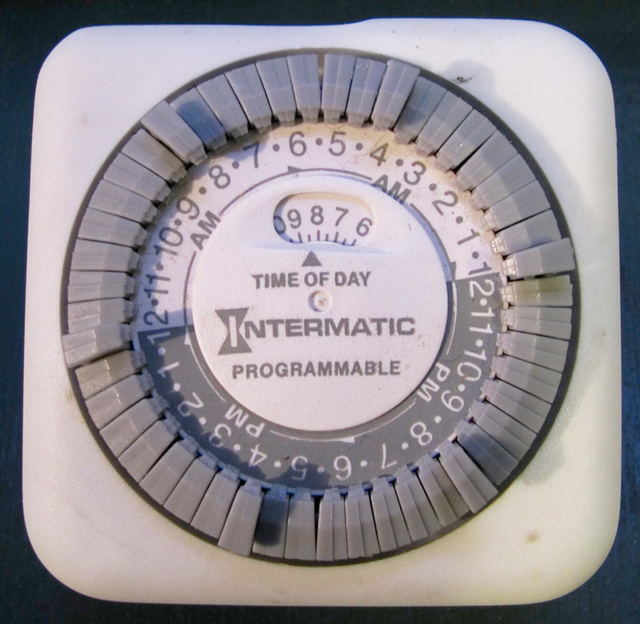If you haven’t upgraded your home’s lighting to wi-fi enabled controls via your smart phone or i-Pod you may be in need of additional controls to lessen your electricity load during times when you are out of the house for extended periods of time. Whether your vacations last two days or a month many people feel more secure knowing that a timer can reduce their energy costs while giving the perception to outsiders that the home is occupied.

Source Harbor Freight
Many of you may remember mechanical timers, the chunky square boxes with a dial that came in white or neutral colors. They are still around, but without reading the directions can present challenges to those that are not mechanically inept. Don’t fret there is another option, digital timers. They offer the same functions as the mechanical timers with the added convenience of a programmable digital face plate.

Source Fishy Review
Here are some ideas for what to use a timer for in your home and office:
vacations or extended stays Water coolers that offer heating and cooling, this can usually be shut off at night and resume function in the morning just an hour before employee or guests are ready for hot and cold water. A coffee maker with a water reservoir that always heats. lamps window air conditioning units or window shakers (there are 24o volt timer for these) free standing heaters grow lights for plants fish tank lights string and rope lighting computers & TVs
For window air conditioners or larger heaters that require a 240 volt timer considerable energy savings can be capitalized on with just turning off the units for 4 hours. When the office or other space closes set the air conditioner or heater to turn off. Before the office opens have the unit turn on before so that it’s a comfortable temperature when you arrive. You may need to do a little fidgeting in order to get the temperatures and times down to meet your needs and the outside temperatures.
There are two types of plug-in timers: mechanical timers and digital timers.Mechanical timers:
set pins to control on and off periods typically they offer 1 or 2 on/off cycles per day
Digital plug-in timers:
allow for more frequent on/off cycles have battery backup allow for different settings for different days of the week.





